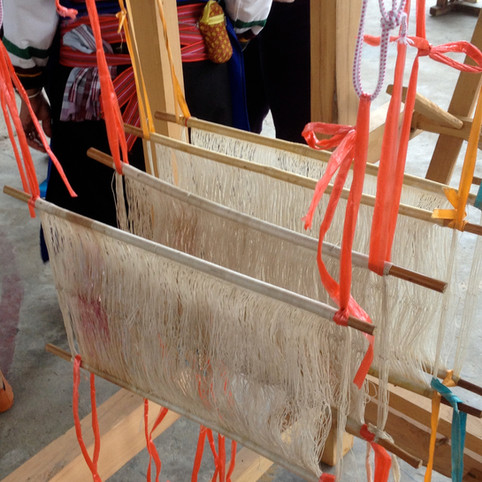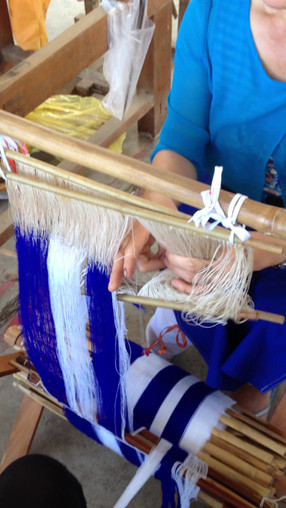Create Your First Project
Start adding your projects to your portfolio. Click on "Manage Projects" to get started
Weaving in Pingzhou village, Yunnan Province, China 2014.
In 2014 I was privileged to be invited to teach weaving to the ladies of the Dai Community in Pingzhou Village, Yunnan Province, China; the ladies were already accomplished weavers and embroiderers but I was tasked with teaching them some new techniques.
Before I went to China, I attempted to get information on the looms the women used so I could plan in advance; the information was never forthcoming so I arrived in the village with no idea what I would be working with.
As it turned out, the looms were basic two shaft looms only capable of doing plain weave so the first task was to increase their shafts and treadles to four each. This would allow us to do far more structures including the simple double cloth which was to be the main technique I was to teach. Also, we were looking at seersucker which requires a second warp beam so some of the looms were also fitted with these.
Once the women were instructed what to do they worked incredibly hard to get the numerous warps made, they were very focused on their work and they were clearly very experienced in the process even if they didn't know the precise weave they were going to be doing.
Language was an issue because most of the women spoke in a local dialect, only a few knew Mandarin so Joseph, my travelling companion translated my instructions from English to Mandarin and one of the women who understood Mandarin translated to the local dialect; it was quite a lengthy process but we soon settled into a process of demonstration with just a little translation. As weaving is a practical skill, my demonstrations were just as effective as an oral description, more so in many instances.
The class was quite chaotic most of the time (for me anyway) because there were lots of women milling around at the same time, moving between looms, chatting constantly and disappearing at various times of the day to deal with household tasks, meal making and looking after children. I never knew who or how many people would be working at any one time but I soon realised that the women wanted to learn and, other tasks aside, would work as hard at their weaving as was possible.
During the time I was there, there were a number of non-scheduled weaves that we decided to do just because someone came up with the idea; one of these ideas was to make a fan-shaped reed to allow us to explore the varying shapes this type of reed allows. Reeds are generally made with parallel spaces but, as suggested by its name, a fan-shaped reed has the spacing in interlocking fan shapes which means there will be areas of quite tightly packed threads next to areas of very open weaves. The trick to using this reed is to vary its height at intervals to allow those differing densities to change. It's a very simple process but can create quite stunning visual effects.
The women worked on ten looms at a time, rotating between them so they all experienced each new process; the warps they had made were so long, they were still working on them when I had to leave the village which was a little disappointing as I didn't get to see the fabrics off the looms. I do know though, that all the fabrics would have been used to create products to sell in their handicrafts shop in the nearby town; the products help to generate some extra income for the women and, equally importantly, encourages younger women to keep the weaving skills alive.








































































